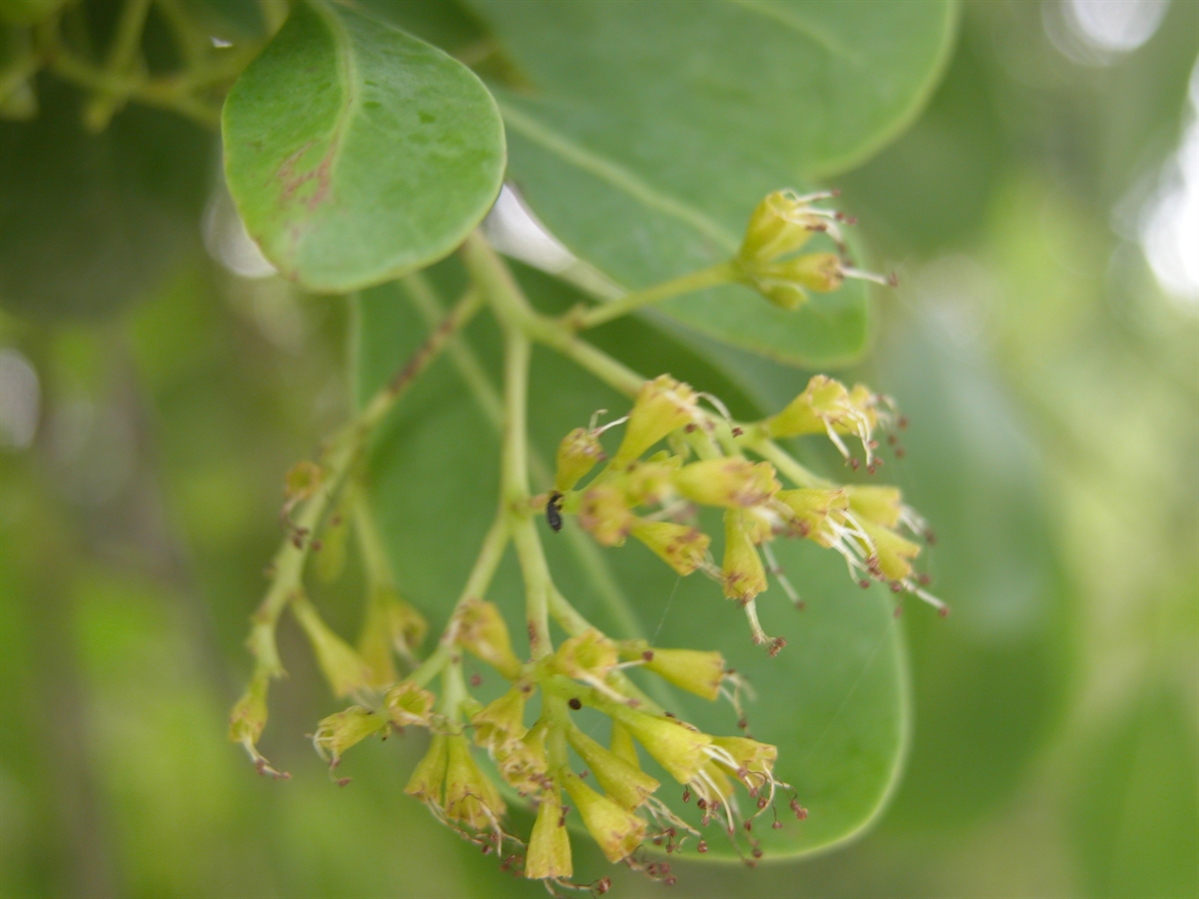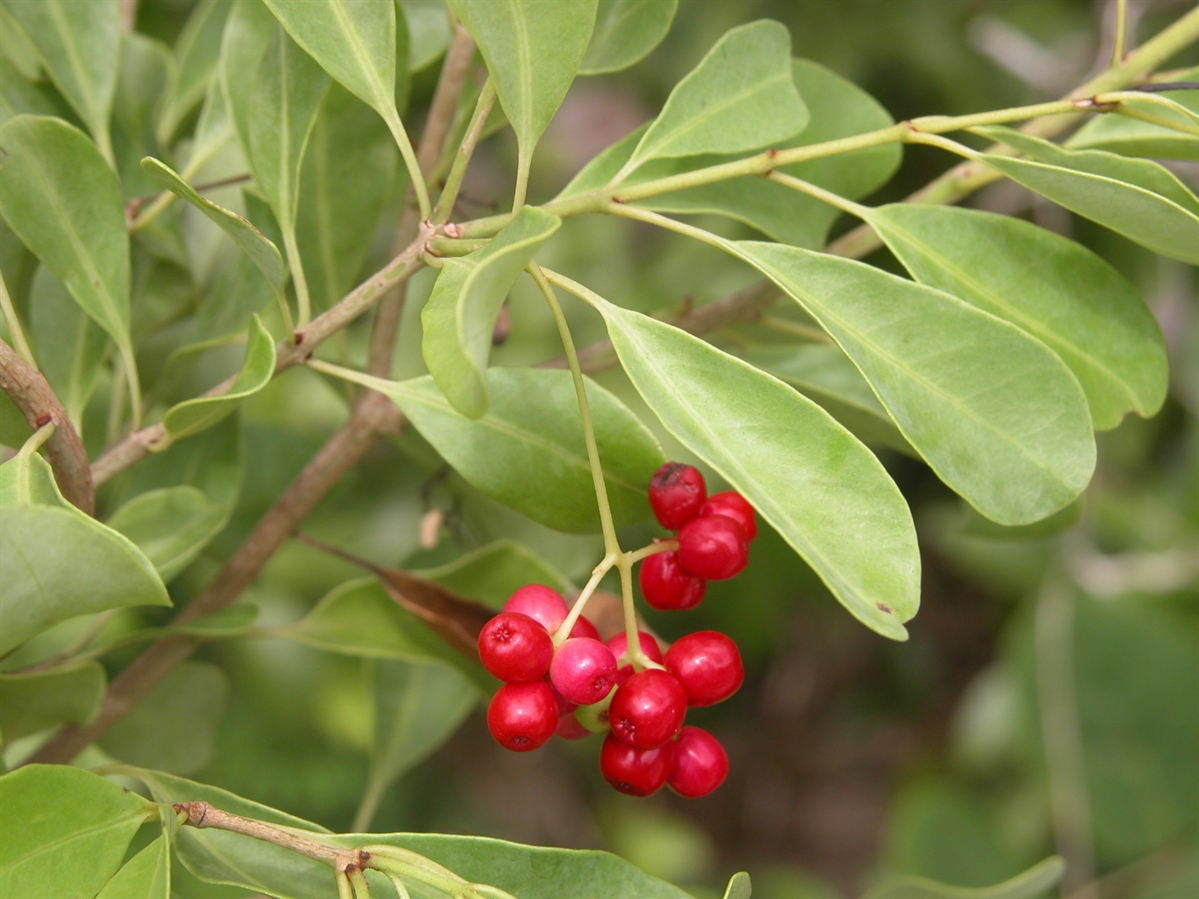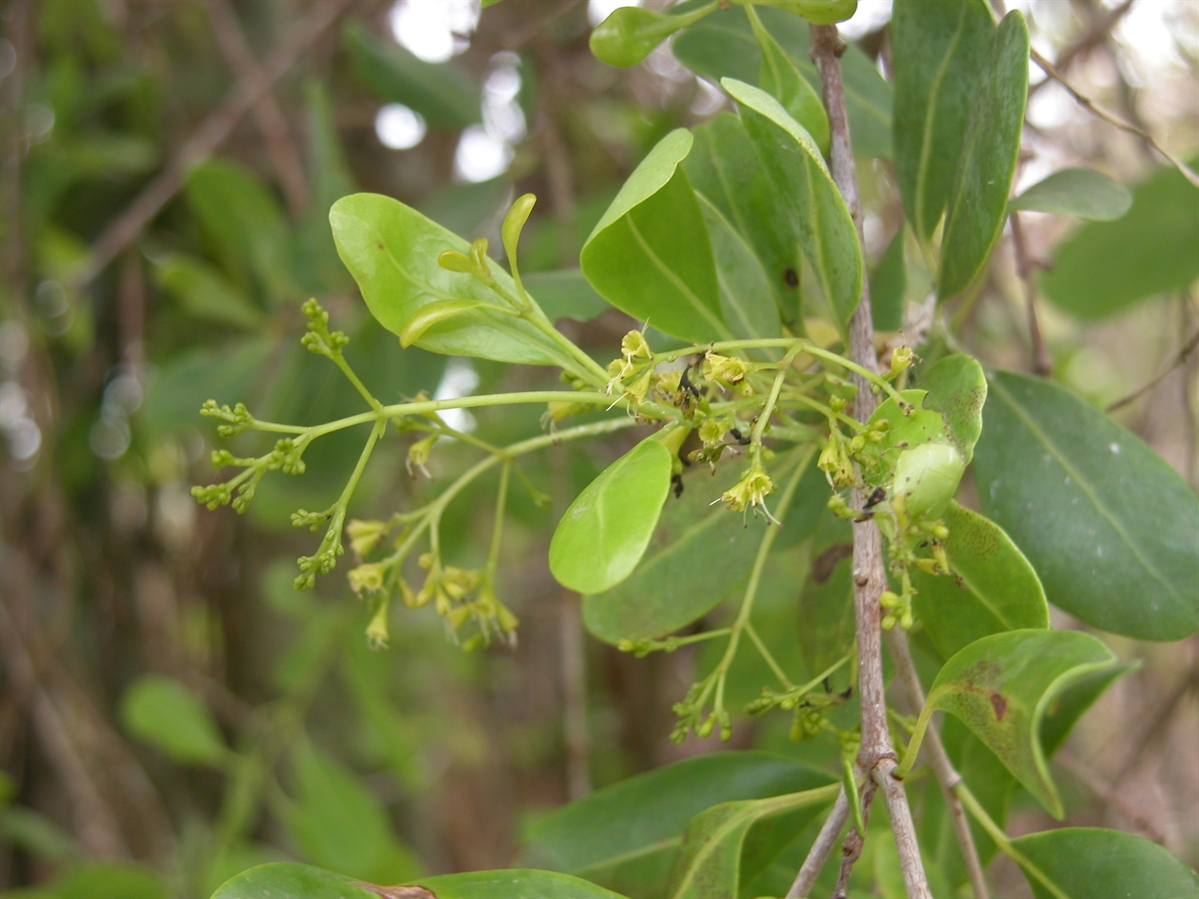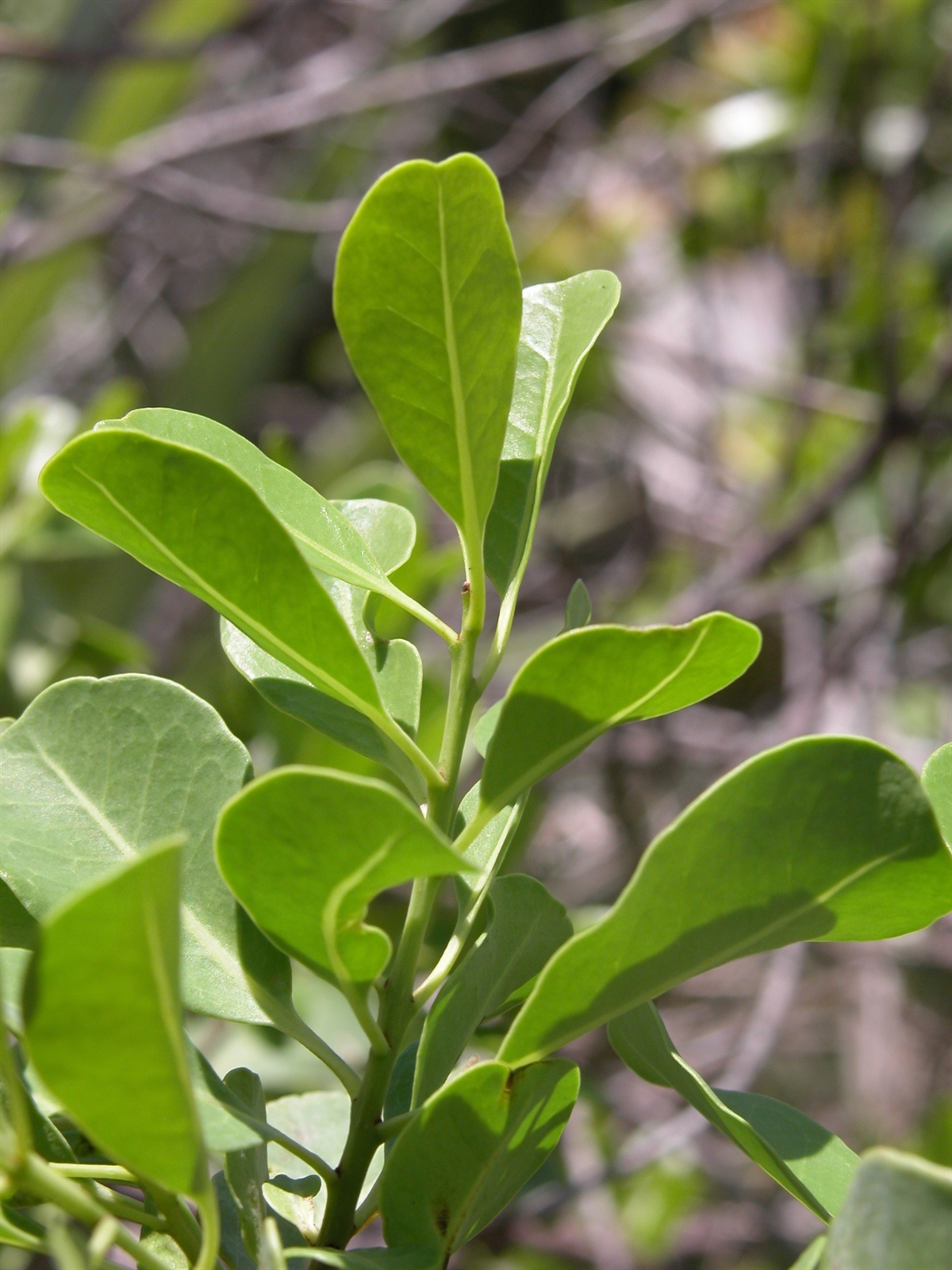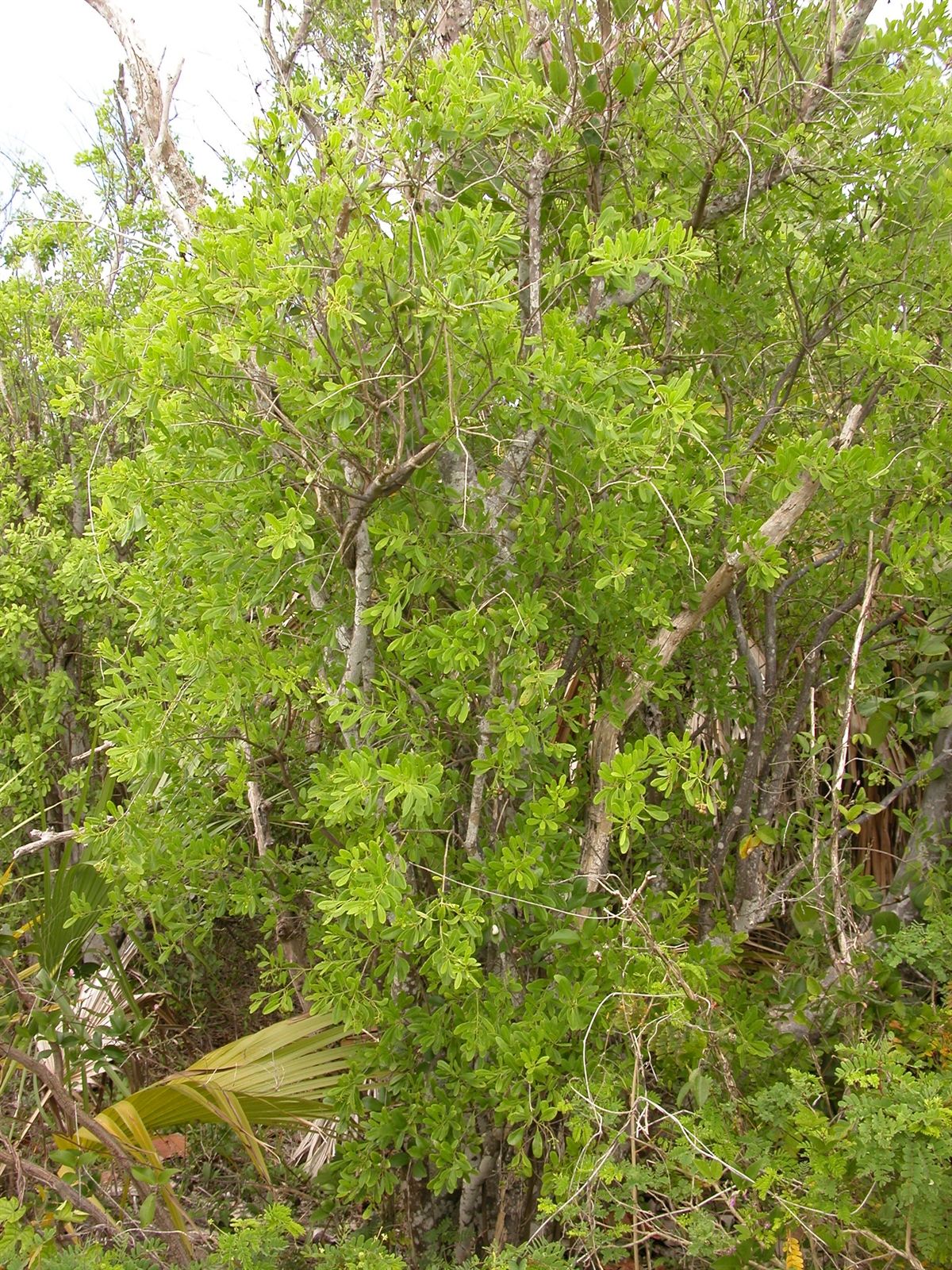Habit: Guapira discolor grows as a small to medium size tree up to seven meters in height. The leaves are arranged oppositely, up to 12 centimeters in length (usually smaller) and are oblong with a retuse leaf apex. The leaves can be variable in shape within the same plant. The leaves may be somewhat fleshy in texture and the mid rib is translucent. Specimens often have a hanging or dropping appearance to the branches.
The incomplete, imperfect, actinomorphic flowers are arranged in reduced panicles. The flowers are staminate or carpellate and occur on the same plant (monoecious). The calyx and corolla have 5 sepals and 5 petals that are fused together to form a perianth. Staminate flowers are larger, yellowish-green and have 7 functional stamens. Carpellate flowers are small, darker green with seven non-functional stamens and a single seeded ovary. The fruit is a drupe that turns bright red at maturity and becomes ribbed (10 ridges) as it dries out.
Habitat: Guapira discolor is found commonly on both sand and limestone rock substrates in Dry Broadleaf Evergreen Formations (Coppice) as well as in Pine Woodlands.
Distribution: Guapira discolor occurs on all island groups within the Lucayan Archipelago as well as south Florida and the entire Caribbean region.
Medicinal/Cultural/Economic usage: Guapira discolor is not known to be used medicinally in the Lucayan Archipelago. The fruit has been reported to be edible. G. discolor is protected by the government of the Bahamas.
The fruits are highly toxic. Do not ingest!

